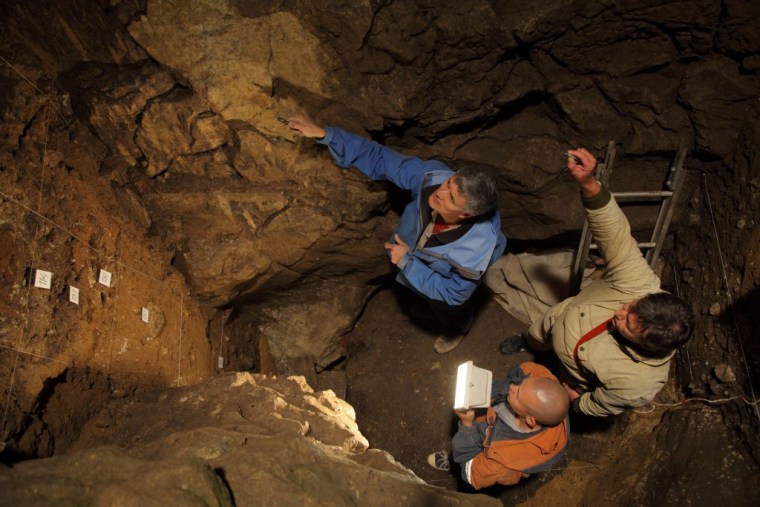People’s sexual indiscretions may follow them for a very long time. Scientists say they just determined that the bone of a girl who died 50,000 years ago shows that she had a Neanderthal mother and a Denisovan father.
It’s not the first evidence of sex between humans of different subspecies, but the surprising finding indicates that different human subtypes were moving around and mixing things up very commonly in the prehistoric past.

And the ancient DNA shows evidence of even more blending, the researchers reported Wednesday in the journal Nature. The father of the girl was also part Neanderthal, they found.
“We knew from previous studies that Neanderthals and Denisovans must have occasionally had children together,” Viviane Slon, an evolutionary anthropologist at the Max Planck Institute for Evolutionary Anthropology in Germany, who worked on the study, said in a statement.
“But I never thought we would be so lucky as to find an actual offspring of the two groups.”
The researchers did not have much to work with — just a fragment of bone found in a remote cave in Siberia. But they got enough DNA from the fragment to sequence it and compare it with DNA from the remains of known Neanderthals, from other bones also found in the Denisova cave, from the remains of modern humans and from chimpanzees.
The bone indicated that it had belonged to a female at least 13 years old at death. DNA inherited from the mother, called mitochondrial DNA, was clearly Neanderthal, the team found. The girl is called Denisova 11 because the bone represents the 11th distinct individual found in the cave.
“Genome-wide signatures show that the Denisova 11 individual has a Neanderthal and a Denisovan parent,” the team wrote in their report.
DNA inherited from the father was more of a mix: mostly Denisovan, but with its own sprinkling of ancient Neanderthal.
While anthropologists knew that Neanderthals and Denisovans were both alive at the same time, they also know that they must have been fairly distinct from one another. The two lines split genetically nearly 400,000 years ago.
Both subspecies were replaced by modern humans about 40,000 years ago, although many people alive today carry some Neanderthal or Denisovan DNA.
“It is striking that we find this Neanderthal/Denisovan child among the handful of ancient individuals whose genomes have been sequenced,” said Svante Pääbo, an expert on ancient DNA and director of the department of evolutionary genetics at the Max Planck Institute.
"Neanderthals and Denisovans may not have had many opportunities to meet," he said in a statement. "But when they did, they must have mated frequently — much more so than we previously thought.”
Scientists know quite a bit about Neanderthals, who were not, as commonly portrayed, shorter or stupider than modern humans. Evidence shows that they used art and made jewelry.
The Denisovans are more mysterious. There is not enough evidence from the tiny scraps of bone and tooth found so far to say what they looked like or to say anything about their behavior.
There’s just enough DNA to show that they were genetically distinct from Neanderthals and from modern humans.
It’s not clear why our particular species won the evolutionary race for survival.
It's possible that modern human ancestors killed off the others, but equally possible that a small genetic advantage simply allowed modern humans to outbreed their cousins.
There’s not even enough to say what happened to the young girl whose bone gives away so much history about interspecies impropriety.
But there’s a hint about her fate, either before or after death, left on the piece of bone that was found.
“The surface … is chemically eroded, possibly due to carnivore digestion,” the team wrote.



